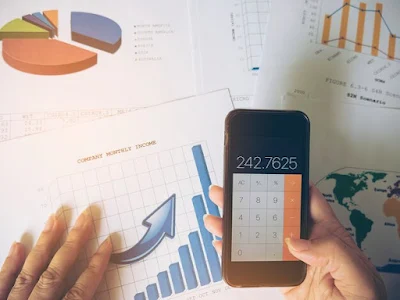Building Financial Resilience: How to Build an Emergency Fund
Table of Contents
- Introduction
- Why an Emergency Fund Matters
- Setting Your Emergency Fund Goals
- Strategies for Building Your Fund
- Where to Keep Your Emergency Fund
- How to Handle Withdrawals
- Conclusion
Introduction
In the fast-paced world of today, unforeseen financial difficulties might strike at any time. A vital safety net for preserving your financial security is an emergency fund, which can be used for unforeseen medical costs, auto repairs, or job loss. We'll discuss the value of an emergency fund in this tutorial, along with doable methods for creating and preserving one.
Why an Emergency Fund Matters
A financial buffer known as an emergency fund gives you the ability to pay for unforeseen costs without using credit cards or loans. This is the reason it's crucial:
- Financial Security : Having an emergency fund gives you the assurance that you can manage unanticipated financial difficulties.
- loans Prevention : If you have emergency funds on hand, you're less likely to turn to high-interest loans in times of need.
- Decreased Stress : Anxiety and stress are lessened when you are ready for financial difficulties.
- Long-Term Goals : It helps you to maintain your long-term financial objectives, such as investments and retirement savings.
Setting Your Emergency Fund Goals
Before you start building your emergency fund, you should establish clear goals. A few considerations include:
- How Much You Need : Aim for at least three to six months' worth of living expenses in your fund. However, the exact amount may vary based on your individual circumstances.
- Specific Goals : Define the purpose of your fund. Is it primarily for medical emergencies, job loss, or general unexpected expenses?
- Timeframe : Set a realistic timeframe to reach your emergency fund goal. This will help you stay motivated
Strategies for Building Your Fund
The following are some methods to assist you in saving money for your emergency fund:
1. Create a Budget : To begin, keep tabs on your earnings and outlays to find places to make savings and transfer money to your emergency fund.
2. Automate Savings : Configure your emergency fund to receive an automatic transfer from your checking account. Rethinking it as a fixed cost can guarantee steady contributions.
3. Make Use of Windfalls : Contribute unanticipated windfalls to your emergency fund, such as tax returns, bonuses, or presents.
4. Side Hustles : To boost your income allocated to your fund, think about taking on a part-time job or side gig.
5. Sell Unwanted Items : To increase your funds, declutter your home and sell whatever you no longer need.
6. Gradual Increase : Raise your savings rate gradually. For instance, try saving a larger portion of your monthly salary.
Where to Keep Your Emergency Fund
You should be able to access your emergency savings with ease, but not too easily. Think about these choices:
- Savings Account : Due to its convenient access to funds and reasonable interest rate, high-yield savings accounts are a well-liked option.
- Money Market Account : Rates on these accounts may be a little higher than those on savings accounts.
- Certificates of Deposit (CDs) : These have a fixed-term investment requirement but usually give greater interest rates.
How to Handle Withdrawals
Your emergency money should only be used for true emergencies. How to handle withdrawals is as follows:
- Assess the Situation : Determine whether the expense is a true emergency that is covered by your fund before taking any cash out.
- Replenish Your reserve : As soon as your financial circumstances permits, replenish the withdrawn amount as quickly as possible after using your emergency reserve.
- Adapt Your Goals : Be ready to modify your objectives in the event of a major emergency in order to maintain the fund's stability.
Steps for budgeting
Retirement Planning 101: A Roadmap to Financial Freedom
Kiplinger's Retirement Planning 2023: A Guide to Financial Security
Conclusion
One of the most important steps to financial stability and peace of mind is setting up an emergency fund. You can build a financial cushion that offers protection when life's unforeseen obstacles come by establishing clear goals, employing sensible saving techniques, and upholding disciplined financial habits. Take the initial step towards creating your personal emergency fund right now. Your future self will be appreciative.






















